
"U.S." Set
I do not know much about this set other than it was printed in Germany.

Vigo County Court House, Terre Haute, Ind.
This postcard was stamped in Terre Haute on November 3rd, 1917 and has the text...
U.S. 438
Printed in Germany
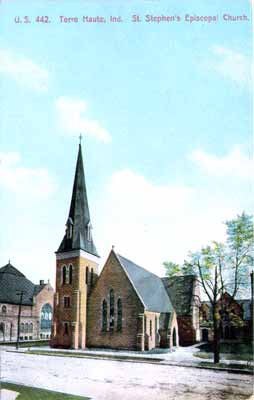
St. Stephen's Episcopal Church
This unused postcard has the printed text...
U.S. 442
Printed in Germany
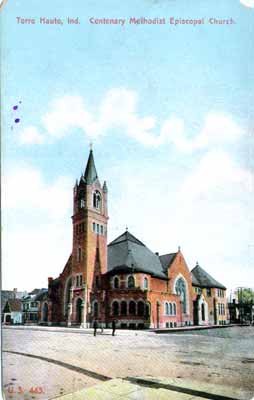
First Methodist Episcopal Centenary Church
This unused postcard has the printed text...
U.S. 443
Printed in Germany
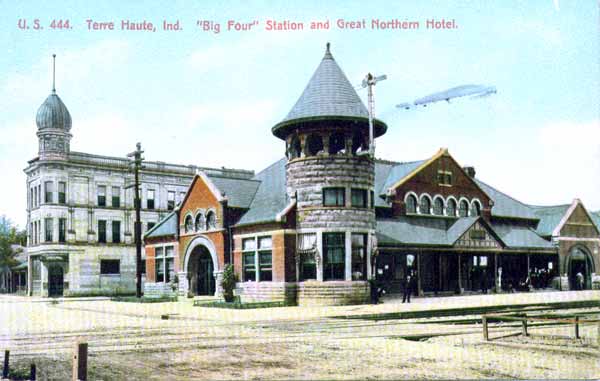
Big Four Station and Great Northern Hotel
This unused postcard has the following text...
U.S. 444
Printed in Germany
Behind the station can be seen the Great Northern Hotel. The hotel was originally called the Northern Hotel when it opened in 1899. It was renamed the Great Northern Hotel in 1907.
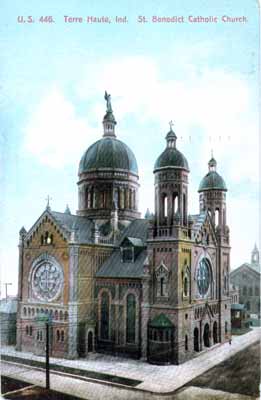
Terre Haute, Ind. St. Benedict Catholic Church
This postcard, stamped in Terre Haute on 20th September 1917, has the text...
US 446
Printed in Germany
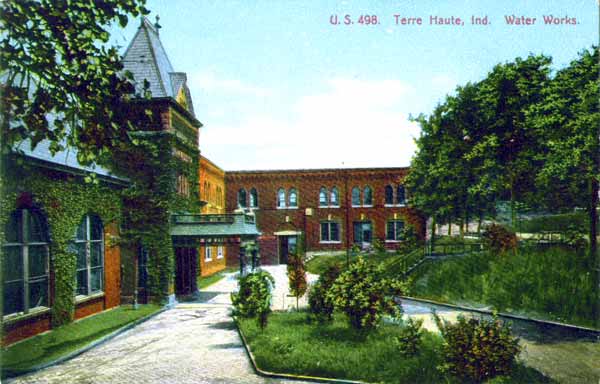
Waterworks Plant
This unused postcard has the printed text...
US 498
Printed in Germany
In May 2008, I was contacted by Walt Fortner who provided the following information...
I know of four other Terre Haute cards (439 -Wabash River Bridge, 440 - City Hall, 441 - Country Club, and 445 - Fairbanks Library). I have also a number from the Portland and Columbia River area (504 - 530 and 535 and 537).
This page created 13th June 2008, last modified 4th January 2010